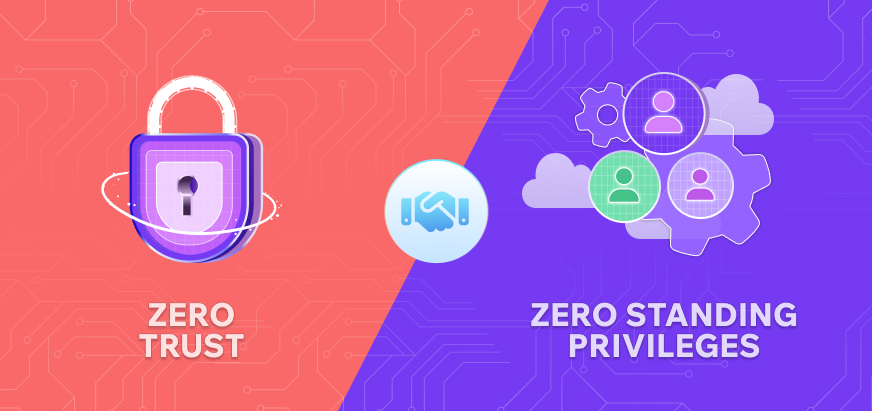As cyber threats grow more sophisticated, organizations are realizing that old-school security models just don’t cut it anymore. To tackle this evolving landscape, a dual approach that fuses Zero Trust with Zero Standing Privileges (ZSP) is becoming essential for a robust cyber defense. By understanding how these concepts interplay, organizations can strengthen their security posture and proactively tackle vulnerabilities.
The Dynamic Duo: Understanding the Concepts
Zero Trust isn’t just a buzzword; it’s a revolutionary mindset that redefines security. The core principle? Trust no one. Whether inside or outside your network, every user and device must undergo stringent verification. Instead of relying on perimeter defenses, Zero Trust emphasizes identity verification, continuous authentication, and least privilege access. Every access request is scrutinized as if it could potentially be malicious, ensuring that only the right people gain the right access.
Zero Standing Privileges complements this approach by ensuring that users hold privileges only for as long as they need them. Think of it as a temporary VIP pass—access is granted on a just-in-time basis, tailored specifically to tasks or timeframes. This reduces the risk of unauthorized access and significantly limits the impact of any compromised credentials.
Why the Power Duo is Essential for Modern Organizations
- Comprehensive Risk Mitigation: By integrating Zero Trust and ZSP, organizations craft a robust, multi-layered defense strategy. Zero Trust tackles vulnerabilities in identity and access management, while ZSP mitigates the risks of prolonged access. This dynamic partnership creates a formidable security framework capable of withstanding a variety of sophisticated attacks.
- Dynamic and Adaptive Security: The modern workplace is anything but static. Employees are accessing corporate resources from a myriad of devices and locations, demanding an adaptable security model. Zero Trust’s rigorous verification process combined with ZSP’s real-time access adjustments enables organizations to remain agile, responding swiftly to evolving threats without compromising security.
- Minimizing Credential Abuse: With credential theft still a leading cause of data breaches, ZSP plays a crucial role in risk reduction. By limiting the duration of access privileges, organizations can effectively shrink the window of opportunity for attackers. If a hacker compromises a user’s credentials, they can only exploit them temporarily—significantly reducing overall risk.
- Enhanced Monitoring and Incident Response: The synergy of Zero Trust and ZSP allows for continuous monitoring of user behaviors and access patterns. This real-time visibility means organizations can quickly identify anomalies and potential security incidents as they unfold. Rapid detection and response are critical for minimizing damage and safeguarding sensitive data.
Actionable Strategies for Implementation
To fully leverage the combined power of Zero Trust and ZSP, organizations can adopt several strategic initiatives:
- Just-in-Time (JIT) Access Controls:
Implement JIT access policies that grant permissions solely when necessary. By requiring users to request access for specific tasks, organizations can drastically reduce the number of users holding standing privileges at any time. - Conduct Access Reviews Like a Boss
Schedule regular access reviews to keep your permissions in check. These audits can unveil overprivileged accounts that need immediate attention. Think of it as a health check for your access management system—keeping it fit and functional. - Multiparty Authorization:
Establish multiparty authorization mechanisms for high-risk actions. This process requires approval from multiple stakeholders, adding an extra layer of security and minimizing unauthorized actions—even if credentials are compromised. - Behavioral Analytics and Continuous Monitoring:
Deploy behavioral analytics tools that continuously assess user activity and detect anomalies in real time. By analyzing patterns of access and usage, organizations can pinpoint unusual behaviors that may indicate potential breaches, allowing for proactive responses. - Automated Access Management:
Embrace automation to streamline identity management processes. Automation facilitates JIT access provisioning, enforces access policies, and dynamically manages user permissions, allowing security teams to focus on higher-level strategic initiatives rather than getting bogged down in manual tasks. - AI-Driven Insights for Access Decisions:
Utilize artificial intelligence to enhance decision-making regarding access permissions. AI can analyze massive amounts of data to evaluate user behavior, predict potential security threats, and dynamically optimize access control policies, ensuring a proactive rather than reactive security posture.
Conclusion: A Unified Security Strategy for Tomorrow’s Challenges
By integrating Zero Trust and Zero Standing Privileges, organizations gain a powerful framework for navigating the intricate and evolving world of cybersecurity. This dual approach not only elevates security posture but also mitigates risks and empowers users with the access they need to excel in their roles.
As cyber threats evolve, organizations must remain vigilant and adaptable. Recognizing the value of combining Zero Trust and ZSP addresses current vulnerabilities while also preparing for a future where cybersecurity is paramount. This unified strategy fosters a culture of security awareness and resilience, enabling organizations to thrive in an ever-changing landscape.
Let’s face it: in the battle against cyber threats, it’s not just about defense—it’s about empowering your organization to take charge of its security destiny.

